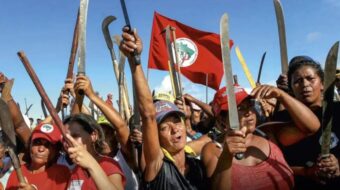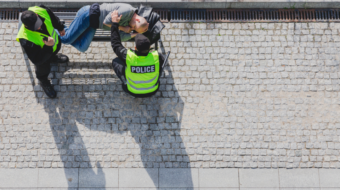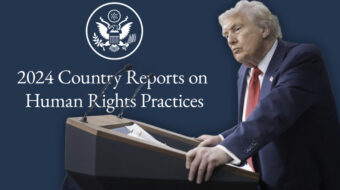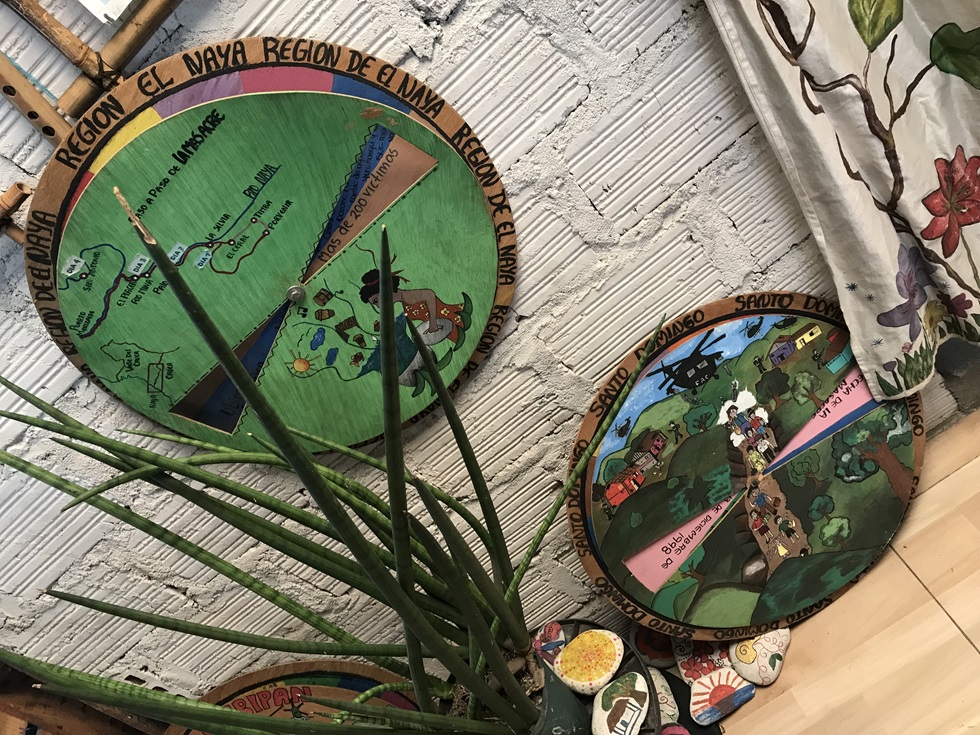
(December 7, 2023) — I finally finished listening to the May 2023 recording of four days of testimony from paramilitary warlord Salvatore Mancuso before the Special Jurisdiction for Peace (JEP), Colombia’s transitional justice court set up as part of the 2016 peace accords. After having worked on human rights and peace issues in Colombia for twenty-five years, and listened to so many victims tell their stories of suffering and sorrow, it took that long to force myself to listen to Mancuso explain how his paramilitary forces worked closely with the Colombian government agencies and security forces to kill so many innocent people in so many evil ways.
Colombia’s transitional court wasn’t set up to hear from paramilitary leaders—the right-wing illegal armed actors closely connected with Colombian official security forces. They had been offered their own transitional justice process through the Justice and Peace law that governed their 2005 demobilization.
The JEP primarily covers demobilized FARC guerrillas and Colombian army members. But paramilitary leaders like Mancuso can apply to testify before the JEP and potentially receive legal benefits if they offer new and significant revelations about the connections between their crimes and state actors. According to the JEP magistrates who questioned him in the hearing, Mancuso, a top leader in the unified paramilitary forces known as the United Self-Defense Forces of Colombia (Autodefensas Unidos de Colombia—AUC) appeared before the JEP because of his role as “bisagra”—an intermediary between the paramilitaries and the state.
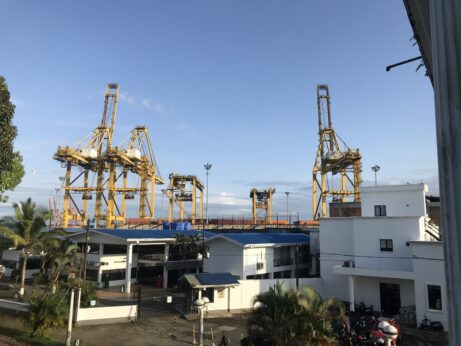
Mancuso is still in a U.S. jail cell, having served out a 12-year sentence for drug trafficking after President Álvaro Uribe approved his extradition in 2008 with 13 other paramilitary leaders to the United States, in what was seen by human rights groups as an attempt to silence the paramilitary leaders from revealing truths about their connection with the state. On November 17, 2023, the JEP announced that it would accept Mancuso under its jurisdiction. The JEP had compared what he shared in public and private with its many other sources and determined that he had provided important, new information about the connections between the paramilitaries and state agents that fueled Colombia’s cycles of violence. This decision commits Mancuso to further collaboration with the JEP’s investigations.
We can’t assume, of course, that everything Mancuso said in the hearings is the truth. It is certainly far from the complete truth, including in the way it downplays the paramilitaries’ major role in drug trafficking. But what he said about the relationship between the paramilitaries and state actors squares with what Colombian and international human rights groups have previously reported. Except—that the alliance between the paramilitaries and the state detailed in Mancuso’s words was even closer, deeper, and more systemic than Colombia’s valiant human rights groups dared report.
What have we learned through Mancuso’s four days of testimony? Most of this is not new, but taken together it paints a vivid picture. (The hearings with Mancuso’s testimony can be viewed here: May 10, 2023; May 11, 2023; May 15, 2023; May 16, 2023.)
- The collusion between state actors and the paramilitary forces wasn’t just with lower-level actors. It was high level and pervasive. Mancuso repeatedly retreats into asking for private sessions with the magistrates when it comes to naming many of the highest-level officials, whether security forces or politicians, but he insists that “everyone knew” and frequently seems incredulous when the magistrates question how high up it goes. “You can’t explain how one can bring troops from one end of Colombia to the other without such coordination.” “I was recruited, trained, and armed by the armed forces. I was their son.”
- The collusion wasn’t just with the military and the notorious DAS intelligence agency. It was with Colombia’s National Police, police intelligence, national and regional politicians, and at times reached top levels of the justice system. Mancuso seems to take pride in recounting how the paramilitaries started to elect local council members, regional governments, and have an impact on presidential elections. “In the end, we controlled a large part of the [national] Congress.” He asserts that Francisco Santos, Álvaro Uribe’s Vice President (2002-2010), in the late 1990s asked the paramilitaries to create a paramilitary group to defend Bogotá, an allegation that Santos adamantly denies. The degree of paramilitary collusion with police, including at top levels, described by Mancuso contradicts the positive image of Colombia’s National Police generally held by U.S. policymakers, even while problems with the army were more broadly acknowledged. One of the few institutions Mancuso singles out as not involved in collusion was the Colombian government’s Human Rights Ombudsman’s office, the Defensoría del Pueblo, often a resource to communities at risk.
- The collusion included working relationships with members of the Attorney General’s office and the Military Justice system (Justicia Penal Militar—JPM). According to Mancuso, the paramilitaries coordinated with some members of the Attorney General’s office, including members of the Technical Investigations Team (Cuerpo Técnico de Investigaciones—CTI), erasing or not reporting evidence of paramilitary crimes and connections with the state. Mancuso claims there was no arrest warrant issued against him even though his leadership within the AUC was common knowledge. The Military Justice system, for its part, colluded in covering up joint operations between the paramilitaries and the military. “Of course, JPM played a role,” says Mancuso, noting that members of JPM did “everything in their power” to divert attention and reveal only what was impossible to cover up.
- The collusion wasn’t occasional, it was routine. Mancuso speaks of weekly meetings with the army, police, and intelligence services. And he details carefully dividing up territory between the security forces and the paramilitaries.
- The collusion was operational. Paramilitaries sometimes acted jointly with members of the military and police, used uniforms and weapons provided by the official security forces, and received training from the DAS, military, police, and air force. Official security forces helped paramilitaries escape from guerrilla attacks and from being discovered and arrested by other state agents, including by hiding them in government offices and security force facilities. The paramilitaries owned nine helicopters and were able to travel by air throughout Colombia without being stopped. Mancuso lists a number of massacres that were planned and executed jointly with military and/or police, including El Aro, La Granja, Pichilín, Mapiripán, Tulapa, La Gabarra, and in response to a question from a magistrate, he asserts there was military collaboration in “almost all” of the more than 14 massacres in Montes de María. Paramilitaries recommended state agents to appoint or dismiss so that key posts would be held by officials who supported state-paramilitary collusion—including regional officials and local prosecutors.
- Members of the military, DAS intelligence service, and police provided lists to the paramilitaries of people to kill. These lists, Mancuso says, “became a death sentence when handed over” to the paramilitaries. The lists included union leaders, environmental activists, human rights defenders, journalists, student leaders and professors in the University of Cordoba, University of Antioquia, and other universities, Indigenous leaders including the Embera and the Sinú, and campesino leaders. The former head of the Colombian Commission of Jurists and current Colombian ambassador to the United Nations in Geneva, Gustavo Gallón, is named as a target, as well as now-Senator Alirio Uribe and other members of the Colectivo José Alvear Restrepo (CAJAR) and the Comité en Solidaridad con los Presos Políticos (CSPP). According to Mancuso, Gallón was spared because the assassination of humorist Jaime Garzón drew too much national and international attention. Current Colombian President Gustavo Petro was another DAS target. The DAS sent threats and funeral wreaths to the targeted human rights activists, journalists, and others. The paramilitaries carried out the assassinations, sometimes aided by real-time surveillance information from the DAS.
- When the number of killings became too high and began to attract attention from international human rights groups, the military asked paramilitary leaders to order their troops to hide the bodies, to disappear victims, and to kill fewer than three people at a time so the crimes would not be categorized as massacres. Mancuso notes, “We were told that if we left too many bodies this would hurt the ability of the local military leaders to get promotions.” He explains that the paramilitaries were told to continue the war “but disappear the bodies.” According to Mancuso, the paramilitaries then started to leave bodies in Venezuela—“dozens, hundreds”—and to burn bodies in crematoria and dump them in rivers.
- The paramilitaries provided the bodies of those they killed to the army and the army rewarded them with weapons. The army would then “legalize” the bodies by labeling them as guerrillas and sometimes as AUC killed in battle with official security forces—although, according to Mancuso, they were almost never AUC. And many, of course, were civilians.
- The paramilitaries and state agents colluded with private companies to intimidate and kill union leaders and those opposing the environmental and community impact of their operations. Mancuso mentions the paramilitaries receiving a list of union leaders working at Drummond Coal who were then killed by the AUC, a charge that Drummond has denied. Private companies paid “taxes” to the legal Convivir self-defense groups and then to the illegal paramilitaries, which helped them buy arms. Among the companies and industries that Mancuso said the paramilitaries coordinated with state forces to protect are banana, coal, oil, palm, and nickel mining companies, cattle ranching, beer and soft-drink factories, and the Urá dam. Mancuso describes the way in which the paramilitaries with support from government security forces backed the expansion of specific economic projects— a connection long denounced by human rights groups, which documented the ways this alliance generated massive violence and internal displacement.
- Paramilitary offensives in rural areas were “operations of punishment that destabilized whole areas.” “We caused populations to displace due to terror.” Mancuso gives few details about human rights abuses committed during paramilitary operations. He mentions his regret about “gender-based crimes, not just sexual abuses but forced servitude” and admits that “we killed campesinos for having marks on their skin that showed they had used a backpack.” “So many campesinos who had nothing to do with it, Dios santo, this happened in almost all our operations, these people were assassinated, and we never thought about this person leaving behind children, mothers.” Ethnic groups were targeted, both Indigenous and Afro-Colombian communities and leadership.
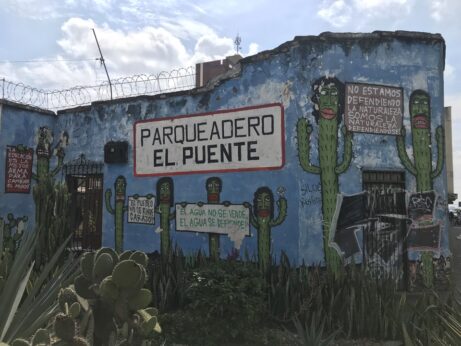
In an interesting admission worth further investigation, Mancuso says he traveled to Miami to buy arms in January 1997, was stopped by U.S. agents in the airport but then allowed to travel back to Colombia with his arms purchases after he said his goal was to fight insurgents.
During these years of close collaboration between the paramilitaries, Colombian security forces and officials of Colombian government agencies, the United States was supplying, training, and supporting the Colombian armed forces and government to the tune of hundreds of millions of taxpayer dollars a year. The State Department was required to report twice yearly to the U.S. Congress on some variation of human rights conditions, such as in this FY2003 State, Foreign Operations appropriations law that
“(A) The Commander General of the Colombian Armed Forces is suspending from the Armed Forces those members, of whatever rank, who have been credibly alleged to have committed gross violations of human rights, including extra-judicial killings, or to have aided and abetted paramilitary organizations;
“(B) the Colombian Government is prosecuting those members of the Colombian Armed Forces, of whatever rank, who have been credibly alleged to have committed gross violations of human rights, including extra-judicial killings, or to have aided or abetted paramilitary organizations, and is punishing those members of the Colombian Armed Forces found to have committed such violations of human rights or to have aided or abetted paramilitary organizations;
“(C) The Colombian Armed Forces are cooperating with civilian prosecutors and judicial authorities in such cases, including providing requested information….
“(D) The Colombian Armed Forces are severing links (including denying access to military intelligence, vehicles, and other equipment or supplies, and ceasing other forms of active or tacit cooperation), at the command, battalion, and brigade levels, with paramilitary organizations;
“(E) the Colombia Armed Forces are executing orders for capture of leaders of paramilitary organizations that continue armed conflict.” (U.S. State Department, “Secretary of State’s Determination Pursuant to Section 564 and Accompanying Memorandum of Justification,” July 8, 2003.) These conditions were one of the few, imperfect tools human rights groups and members of Congress concerned with human rights in that country had to influence the U.S. government to focus on human rights abuses by the Colombian military and the ties between paramilitaries and state actors.
And in every instance from FY2000 through the 2005 demobilization of the AUC, the State Department certified that the Colombian government met these conditions. For example, in FY2003, the State Department certified that “The Colombian Armed Forces are taking effective action to sever links between military personnel and paramilitary units at the command, battalion and brigade levels. In addition, President Álvaro Uribe and Defense Minister Marta Lucía Ramírez have stated repeatedly, both publicly and in discussions with USG officials, that they will not tolerate collaboration between military personnel and paramilitary groups.” (See above source in [E] above, p. 13.) The State Department certified despite detailed information on links between the paramilitaries and state agents, particularly members of the armed forces, submitted directly to the State Department by Colombian, U.S., and international human rights groups. I know. I was there.
An overarching lesson from Salvatore Mancuso’s four days of testimony: Listen to the human rights groups. They are on the ground. They are listening to the victims. They know. They may even, in their need to establish credibility, be understating the unbelievably chilling truth. Listen.
Posted with permission of Latin America Working Group (LAWG). The original text can be viewed here.
We hope you appreciated this article. At People’s World, we believe news and information should be free and accessible to all, but we need your help. Our journalism is free of corporate influence and paywalls because we are totally reader-supported. Only you, our readers and supporters, make this possible. If you enjoy reading People’s World and the stories we bring you, please support our work by donating or becoming a monthly sustainer today. Thank you!



